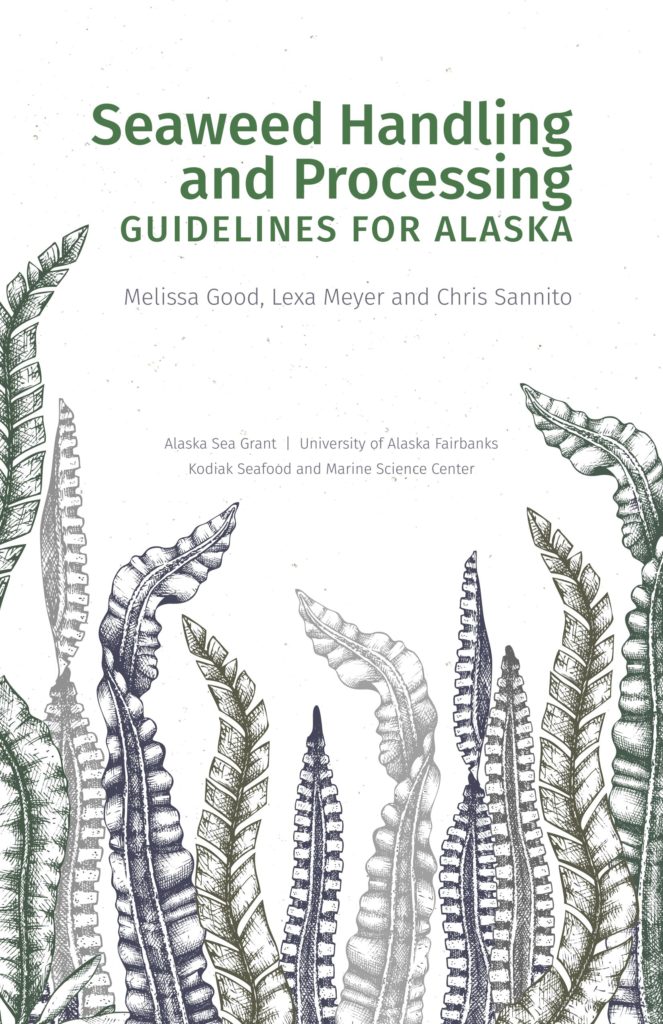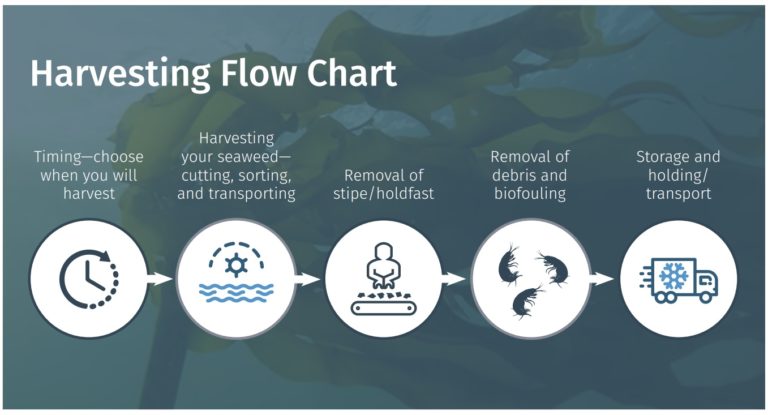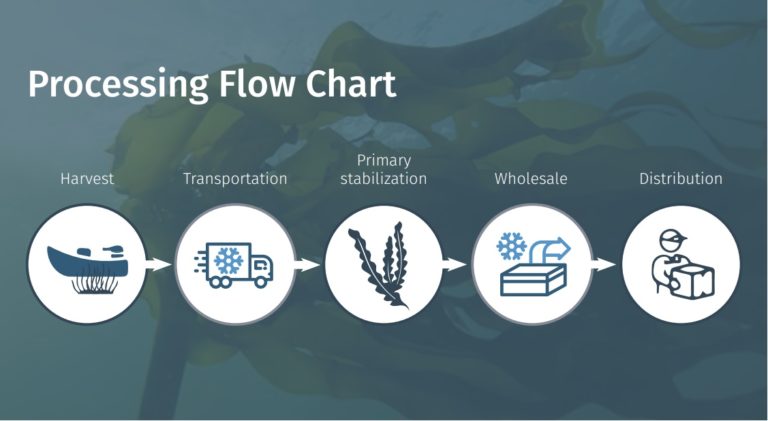Read: Seaweed Handling and Processing Guidelines for Alaska

Authors Melissa Good, Chris Sannito, and Lexa Meyer of Alaska Sea Grant - University of Alaska Fairbanks' Kodiak Seafood and Marine Science Center wrote a comprehensive guide for seaweed use in Alaska: Seaweed Handling and Processing Guidelines for Alaska.
We recommend perusing through, even for those of you who are not harvesting or farming seaweed! Their overview of rules and best practices for seaweed harvesting, growing, and processing can help illuminate the magic of seaweed as well as biophysical and mechanical concerns involved in each step of seaweed harvest and processing.
"There is state and federal support for developing Alaska mariculture industries, which could help increase sales of Alaska seaweed, and increase the capacity and capability of new and existing companies involved in purchasing and processing. This guide was developed to help individuals and companies better understand what’s involved as they decide whether to enter the seaweed processing industry, and to provide some industry standards in the manufacturing or processing of kelp." - Introduction to Seaweed Handling and Processing

Harvesting excerpt: "Timing for harvest is site dependent, with optimal harvesting conditions occurring when increasing water temperatures decrease biomass quality and quantity. It is important for farmers to understand their site characteristics and know when fouling will start to take place. The harvesting period for a given location ends as rapid increases in water temperature lead to development of epifauna—animals that live on and attach to the surfaces of living organisms— and they can attach to the kelp blades, known as fouling." (p. 41)

Processing excerpt: "Kelp is typically clean from a microbial standpoint in its natural habitat. Taking steps to keep it this way throughout harvesting, handling, and processing greatly reduces the chances of contamination. It is easier to keep the kelp clean than to decontaminate it at a later step. Depending on the volume of kelp, cleaning equipment can be a simple plastic tub filled with the cleaning solution, a dunk tank, or an industrial-scale vegetable washing machine." (p. 51)
Citation:
Good, M., C. Sannito, and L. Meyer, 2021. Seaweed Handling and Processing Guidelines for Alaska. Alaska Sea Grant, University of Alaska
Fairbanks. Fairbanks, Alaska. https://doi.org/10.4027/shpga.2021

